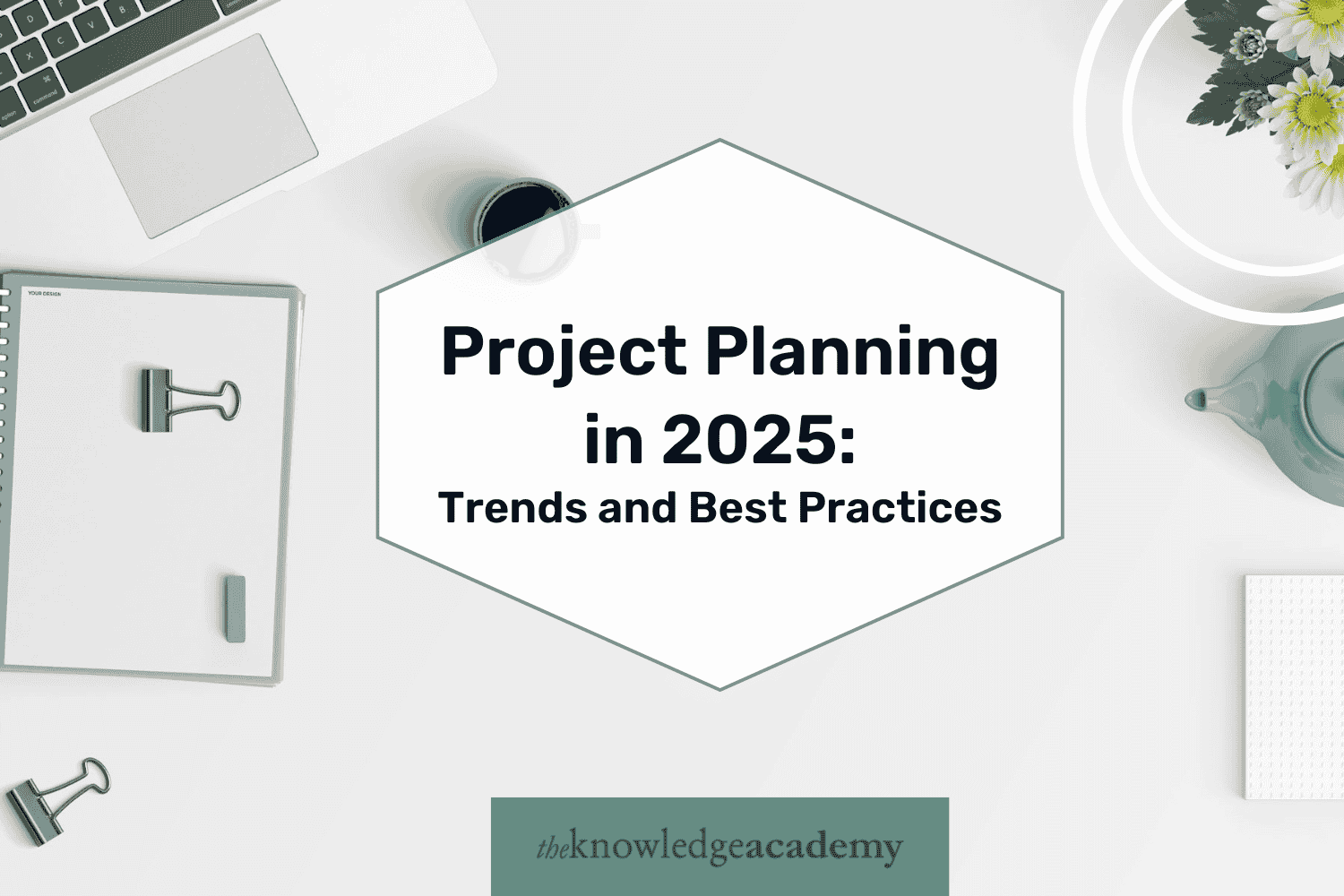As the new year rolls on, there are plenty of game-changing trends and best practices to look forward to that revolutionises the world of project planning. For instance, as Artificial Intelligence (AI) catalyses your decision-making and Agile practices will stay at the forefront of every plan. Project Planning and Control Training can help you harness the potential of these options with confidence. Integrating these trends and best practices into the foundational elements of What is Project Planning can go a long way in elevating your projects. This blog explores exactly how you can hone your project planning prowess with ease and stay ahead of your competition. Let’s dive in!
Elements of Project Planning
Project planning is the second stage of the project management process and follows the project initiation phase. The project manager develops a project plan and maps the requirements during this stage. The project planning phase typically contains the following elements:
- Goals and project objectives
- Success metrics
- Stakeholders and roles
- Budget, scope and resource allocation
- Milestones and deliverables
- Timeline and schedule
- Communication plan
Trends in Project Planning
As project planning continues to present new challenges and opportunities, project managers must adapt to changing tools and methodologies. Here are some of the best trends you can follow:
AI and Automation
Artificial intelligence and automation have become exciting necessities. AI transforms how projects are managed from automated scheduling to intelligent resource allocation. These tools now offer Predictive Analytics to anticipate risks. Additionally automated workflows can save time and chatbots offer significant assistance with task management.
Prioritise Sustainability
Tools that track sustainability metrics are gaining more and more traction. This helps you align your work with Corporate Social Responsibility (CSR) goals such as eco-friendly resource allocation, waste reduction strategies and carbon tracking.
Data Driven Decision Making
Real time Data Analytics revolutionise how projects are planned. Advanced dashboards give insights into resource utilisation, cost tracking and project timelines for quicker decision-making.
Evolving Agile Methodologies
Hybrid approaches such as those combining Agile with traditional methodologies will enjoy greater adoption. This offers Agile flexibility while retaining the traditional planning structure.
Cybersecurity
Guarding sensitive project data and maintaining secure communication must be a top priority for you. Tools with multifactor authentication, encrypted platforms and strict access controls will be the key to mitigating risks in the project planning process.
Collaboration Tools
Platforms combining document sharing, task management and communication features into a single interface amplify collaboration. They reduce the need for multiple tools and help teams streamline workflows and stop silos.
Certifications and Continuous Learning
Certifications in Agile and AI driven project management are increasing in demand. Organisations will invest more in continuous learning to equip teams with the skills needed for modern Project planning challenges.
Best Practices to Adopt in Project Planning
When you learn the best practices for an effective project planning, success is yours. Let’s see some of the best practices to be adopted to your projects:
Define Business Case
A business case is a document that defines the value or benefits a project holds for the company. It includes:
- Strategic context
- Cost analysis
- Benefits
- Problem analysis
- Potential ROI
- Risk
- Rewards
Create Project Charter
Framing a project charter is one of the fundamental best practices during the project’s initiation phase. A Charter is a document issued by the project initiator authorising the existence of a project and entails the following:
- Project name
- SMART objectives
- Project overview
- Requirements
- Activities
- Milestones
- Deliverables
- Timeline
- Constraints
Host a Project Kickoff Meeting
Once the project charter is ready, the next step involves bringing everyone with a stake in the project together to kick off the project. The kickoff meeting enables stakeholders and team members to share their perspectives, align expectations, and provide immediate feedback.
Develop a Comprehensive Project Plan
A project plan is a roadmap for your team to move forward confidently while working individually on tasks. Some of its key components are:
- Clear work breakdown structure
- Detailed and realistic timeline
- Identify all the required resources
- Assigned roles and clear responsibilities
- Risk management plan
- Established quality standards
- List of key stakeholders
Set Clear Communication Channels
Both internal and external communication are necessary in project planning. It involves the following:
- Consistent communication between team members
- Updating stakeholders about the project’s progress, roadblocks, and pending work
- Team communication tools that allow:
- Group conversions in real time
- File sharing and updates
- Attaching documents
- Proofing content
Make Contingency Plans
Projects are subjected to risk at every level which makes a strong risk management plan extremely important. These are the points to remember about contingency plans:
- Identify risks early in the planning stage
- Evaluate the likelihood and potential impact of each risk
- Develop mitigation strategies for anticipated risks
- While not all risks can be predicted a structured approach prepares you for unexpected challenges
- This proactive approach helps minimise disruptions, avoid delays and keep projects on track
Conclusion
As the evolving business landscape pits new challenges, it also presents new opportunities. The Project planning process can level up by incorporating the new trends and best practices outlined in this blog. From AI decision making to improved sustainability practices it’s all about embracing innovation and adaptability. If you are seeking deeper insight into the world of Project planning, courses offered by The Knowledge Academy will guide you.





Be First to Comment